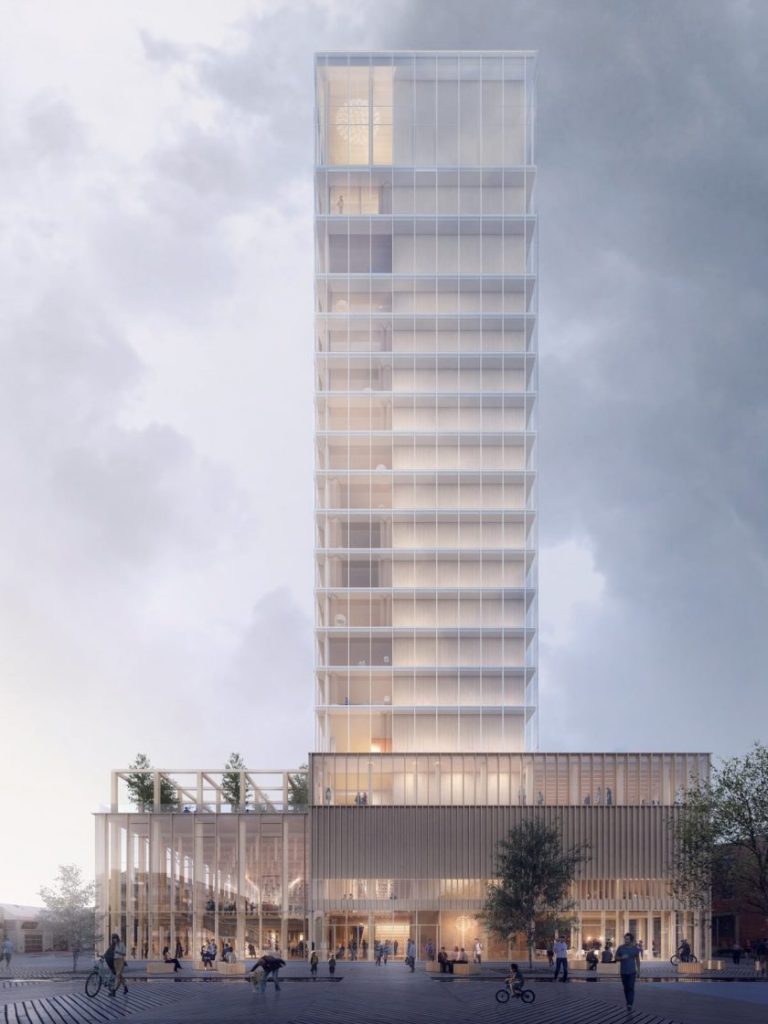Green certification schemes such as BREEAM and LEED are “meaningless” since they focus on reducing operational emissions while overlooking embodied carbon.
.
One of the shortlisted buildings for the latest RIBA Stirling prize was a striking wooded building:
RIBA Stirling Prize 2021 films: Cambridge Mosque by Marks Barfield
Stirling prize shortlist: from mosque stunner to neo-neolithic flats | Stirling prize | The Guardian
Although it’s not exactly easy to use wood in buildings in this country:
Rules restricting the use of wood in UK buildings are hampering the switch to low-carbon building methods, according to timber architecture expert Andrew Waugh. Waugh attacked recent government legislation and new funding rules for affordable housing in London, both of which make it harder for architects to specify timber.
… rules have been introduced in the wake of the 2017 Grenfell Tower disaster, in which 72 people died after the plastic-and-aluminium cladding on the London housing block caught fire. Waugh described the rules as a “politicised knee-jerk reaction” that confuse combustibility with fire performance and contradict efforts to tackle carbon emissions from construction.”Carbon taxes on building materials are an inevitability,” Waugh said, referring to the fact that construction accounts for around 40 per cent of global emissions.
“Carbon will have to be accounted for and as soon as that happens, then we will need to be building in low-carbon building materials.” Embodied carbon, which describes emissions caused during the construction process, has come under the spotlight recently. These emissions account for around half of all emissions from the built environment but have been neglected when compared to operational carbon, which is the term for emissions caused by buildings in use. “This needs to change,” Waugh said. “I think governments are still wrapped up in talking about operational carbon [emissions caused by the building in use] but actually the western world is already really efficient at building efficient buildings.” In an interview with Dezeen earlier this year, Waugh described green certification schemes such as BREEAM and LEED as “meaningless” since they focus on reducing operational emissions while overlooking embodied carbon.
Interest in biomaterials including timber, hemp, cork and mycelium has surged recently as architects explore ways of reducing the embodied carbon of their projects. Several countries and cities have introduced legislation to encourage the use of biomaterials. Natural materials must now make up at least half of all the raw materials used in new public buildings in France. In New York, the city council has just approved the use of mass timber for the construction of buildings of up to 85 feet (25.9 metres) tall.
UK rules on building with timber are a “policy car crash” says Andrew Waugh
Meanwhile, in Sweden:
Sweden now has a wooden skyscraper | TheMayor.EU
Wood reflects character of Skellefteå – Wood Magazine
… as reported by Oliver Wainwright:

As you come in to land at Skellefteå airport in the far north of Sweden, you are greeted by a wooden air traffic control tower poking up from an endless forest of pine and spruce. After boarding a biogas bus into town, you glide past wooden apartment blocks and wooden schools, cross a wooden road bridge and pass a wooden multistorey car park, before finally reaching the centre, now home to one of the tallest new wooden buildings in the world.
“We are not the wood Taliban,” says Bo Wikström, from Skellefteå’s tourism agency, as he leads a group of visitors on a “wood safari” of its buildings. “Other materials are allowed.” But why build in anything else – when you’re surrounded by 480,000 hectares of forest?
If you are wondering what a climate-conscious future looks like, small subarctic Skellefteå (pronounced similarly to “she left you”) has some of the answers. In a clearing on its outskirts, Europe’s largest battery factory is currently under construction. The next generation of electric vehicle batteries will not only be produced here, but recycled too. Electric helicopters will soon be able to shuttle visitors to the gargantuan Northvolt gigafactory, while longer-distance electric aeroplanes are being tested nearby.
Skellefteå runs on 100% renewable energy from hydropower and wind, and recycles 120,000 tonnes of electronic waste a year, with excess heat from the process fed back into the city-wide heating system. And now, nosing 20 storeys above the low-rise skyline, Skellefteå has a fitting monument to its carbon-cutting credentials. The Sara Cultural Centre and its towering Wood Hotel stand as beacons of what it is possible to do with timber – and store about 9,000 tonnes of carbon from the atmosphere in the process…
image: Skellefteå Cultural Centre breaks ground | White Arkitekter
See also:
Building with wood – Vision Group for Sidmouth
What is a ‘net-zero carbon’ building? – Vision Group for Sidmouth